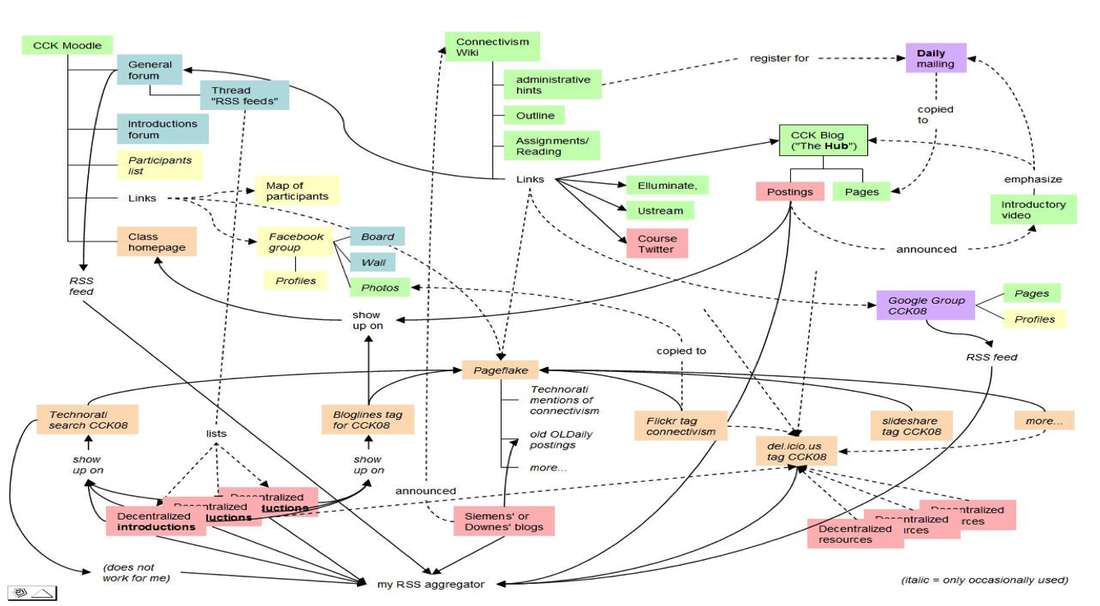Siemens' and Downes' Connectivism: Support for Instructional Technology
Connectivism has been called a learning theory for a digital age. It arose out of the premise that no current learning theory was able to encompass the current generations sustained use and integration of digital media along with the push towards personalization of learning.
Instructional technology is instrumental in allowing the vast social networks and accommodating the dissemination of the rapidly changing knowledge that is foundational to Connectivism. Without technology, the level of equitable and open connection that is necessary for this theory to be valid would not exist. Technology allows learners to function in networks as oppose to groups. While groups are closed communities that often revolve around one "leader" to disseminate knowledge or direction, networks are entirely open and allow contributions from anyone. Social media and digital platforms level the playing field by allowing a very broad audience to access networks. One challenge of Connectivism is that it can be difficult to take all of the different threads from the network and turn it into a unified narrative of learning.
Instructional technology is instrumental in allowing the vast social networks and accommodating the dissemination of the rapidly changing knowledge that is foundational to Connectivism. Without technology, the level of equitable and open connection that is necessary for this theory to be valid would not exist. Technology allows learners to function in networks as oppose to groups. While groups are closed communities that often revolve around one "leader" to disseminate knowledge or direction, networks are entirely open and allow contributions from anyone. Social media and digital platforms level the playing field by allowing a very broad audience to access networks. One challenge of Connectivism is that it can be difficult to take all of the different threads from the network and turn it into a unified narrative of learning.

